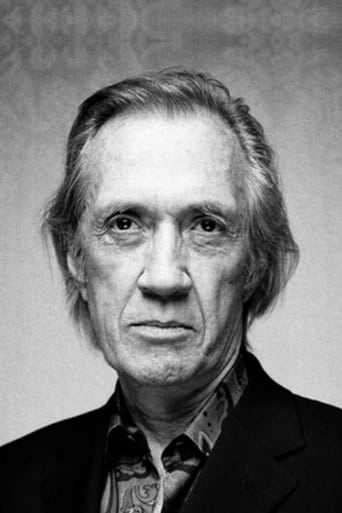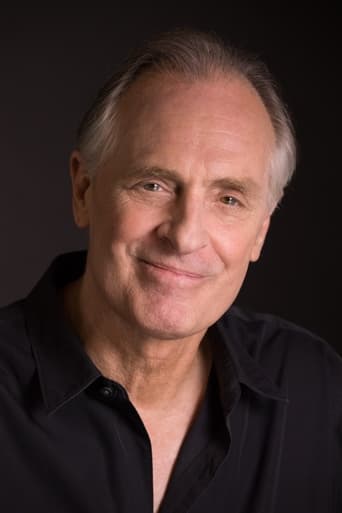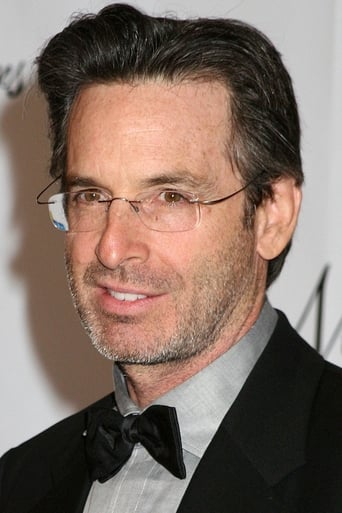SoTrumpBelieve
Must See Movie...
Voxitype
Good films always raise compelling questions, whether the format is fiction or documentary fact.
Kien Navarro
Exactly the movie you think it is, but not the movie you want it to be.
Allison Davies
The film never slows down or bores, plunging from one harrowing sequence to the next.
romanorum1
The western is not what it once was. Remember that the first American movie (1903) was a western, "The Great Train Robbery." Not long after, heroes like Tom Mix and William S. Hart dominated the silent screen of the Old West. In 1928, "In Old Arizona" became the first talkie western. Over the next several decades, the genre continued to attract audiences. Even though the peak probably occurred in the early 1960s, the 1950s decade became the best decade of the brand, and not only because John Wayne and Randolph Scott were at their crests. In the 1959-1960 television season, no fewer than 26 westerns appeared on prime time. There had always been a major distinction of who were the good guys and the bad guys. Each had their roles, and audiences knew who was who. It should be noted that even in some earlier westerns like "Jesse James" (1939) the outlaws were given sympathetic treatment. The characters were made likable. But beginning in the mid-1960s, the format of the western changed. Revisionism and anti-westerns were the vogue as they became more cynical and darker. European westerns made an impact, and the anti-hero was born. The code of the former good guys changed: Sometimes there was little to distinguish who was good and who was bad. Unlike those well-spoken and compassionate good guy cowboys like Hart, Mix, and Gene Autry, the newer "heroes" (like Clint Eastwood and Gene Hackman) were often flawed. Empathy abated, and some broke the law; a few were even murderous. Likewise, the language of the good guys turned crude. Throughout the 1970s the old-time western was obviously in decline; John Wayne's final movie was "The Shootist" in 1976. The days of "The Life and Legend of Wyatt Earp" (1955-1961) had long passed. Just compare "Rio Grande" (1950) or "Warpath" (1951) with "The Wild Bunch" (1969) or "Soldier Blue" (1970), or try to equate any Gene Autry western with "Cry Blood, Apache" (1970)."The Long Riders" gives us an early aspect of the post-modern western, a style that tended to choose atmosphere over form and still sometimes blurred the distinction between good and bad. The heroes may or may not be anti-heroes. So were the "protagonists" of "The Long Riders" working-class heroes or just bad guys? The answer is that they were outlaws, but not sadistic villains. The focus of "The Long Riders" is on the highlights of the James-Younger gang of the nineteenth century Midwest (not the Far West). The supporting population was mostly sympathetic to the James-Younger gang as they were looked upon as rebelling against the hated Yankees. In summary, the film highlights their train and bank robberies after the Civil War; the acceptance of danger by the James-Younger women; the Pinkerton National Detective Agency methods of hunting down the gang; the killing of John Younger by a Pinkerton detective (1874); the exploding flare thrown into the James home that maimed Jesse/Frank's mother and killed his half-brother Archie (1875); the disaster at Northfield, Minnesota that finished the Youngers and destroyed the gang (1876); and the traitorous act of Bob Ford (1882), the dirty little coward that shot Mr. Howard. Four sets of real life brothers play the four historic families of the Wild West: the Keaches are the James, the Carradines are the Youngers, the Quaids are the Millers, and the Guests are the Fords. James and Stacy Keach play Jesse and Frank James, respectively; David, Keith and Robert Carradine are Cole, Jim and Bob Younger (and since there are not enough brothers, Kevin Brophy plays 4th brother John Younger, although he is a cousin in the movie) James; Dennis and Randy Quaid are Ed and Clell Miller; and Christopher and Nicholas Guest play the backstabbers Charlie and Bob Ford. Bob plugged Jesse in the back of the head as he adjusted a framed copy of the saying "God bless our home." Actually Jesse was just dusting the picture. The movie does some romanticizing of the gang, although the early murderous act of Ed Miller is portrayed brutally. Then again, Jesse dismisses Miller for his action against an innocent civilian. What ultimately makes the movie watchable is its favorable aspects. These positives include the (already explained) imaginative casting, top-notch acting, remarkable period detail, outstanding editing, and great photography. But also note there is violence and that the history is not always accurate (like the confrontation between Cole Younger and Sam Starr that never happened). Then again it is accurate enough. For instance, the gang did wear dusters at Northfield and Frank James did turn himself in to the law; he was later acquitted.
poe426
THE LONG RIDERS isn't as gritty as THE GREAT NORTHFIELD, MINNESOTA RAID nor as theatrical as, say, TOMBSTONE (another movie about a real life shootout), but it IS super-stylized, with an impressive cast. If I have one complaint, it's that the historical background of "the James gang" is only briefly touched upon: it would've been interesting to see how the Civil War atrocities that were committed BY and AGAINST some of these men resulted in the formation of the gang- from the loss of personal property to the acts of outright murder they then committed themselves. I've never bought into the idea that these men were Robin Hoods (I've never read any documentation to that effect); they were robbin' hoods, and they were murderers. THE LONG RIDERS is a romanticized version of what was for many a true life horror story. It would be interesting to see this story from THAT perspective. (And I've always thought it telling that the gang was decimated by armed citizens and not by Law Enforcement.)
Red-Barracuda
The Long Riders is one of a specific type of historical western that seems to have been continually made throughout the life of the genre. And that is specifically a film that glorifies the outlaw gunfighters, or more specifically romanticises real-life killers. It's not only the western that did this of course, crime films since Bonnie and Clyde have did a similar thing but the villains of the old West seem to be particular favourites for the Hollywood airbrush treatment. In the case of this movie, it's the James-Younger gang who are the heroes. In real life, these guys were cold-blooded killers, while here they are seen the lesser of two evils. They are pursued by the Pinkerton Detective Agency who are portrayed as really being the bad guys here – they fire-bomb houses full of women and children after all; whereas the outlaws are by comparison relatively noble. I'm pretty certain the truth was far less simple, although in fairness at the end of the movie the James brothers are seen deserting the Coles and the Morris's to ensure their skin is saved. So the movie does at least present things with a little moral greyness.It's a good film though. The central idea that makes it most famous is of course having four sets of real brothers play four sets of real brothers. It's an idea that essentially works, as the actors all acquit themselves well enough. Aside from these guys there are also appearances from some interesting actors such as James (The Warriors) Remarr as a bar-fighting Indian and Eddie (Reservoir Dogs) Bunker as one of the later gang members. It's a handsome looking film at times with a lot of nice backdrops and some well shot action scenes. In fact, it's this combination of laid-back domestic moments with full-on bloody violence that gives the film its varied energy. The gun-fight sequences recall the films of Sam Peckinpah with their slow-motion carefully orchestrated carnage. But perhaps the best single action moment involves a line of men on horseback crashing through a large pane of glass – I sure haven't seen that before. Adding a bit of authenticity to proceedings is a score by Ry Cooder that incorporates a lot of traditional music from the period.Overall this is one of the few strong westerns from the 80's.
ShootingShark
After the Civil War, the James-Younger gang commits a series of daring robberies of banks and trains in and around Missouri. The Pinkerton Detective Agency is called in to try and deal with these notorious outlaws.I love this western for many different reasons. Chief amongst them is simply that it looks and sounds gorgeous, full of authentic period detail, beautiful costumes, rich traditional music and expertly staged action. I also love the cast, all of whom are tremendous; some may dismiss the idea of casting four sets of real life brothers, but it works beautifully because they are all great players. David Carradine and Stacey Keach as Cole Younger and Frank James in particular are two of the few actors I can think of who could pull off these larger-than-life roles and not look ridiculous. Everyone is great though and special mention has to go to Reed as Belle Starr, who sizzles up the screen and matches the machismo shot for shot. Perhaps the most interesting aspect of it though is its detached political stance - one view of Jesse James is as a heroic fighter who refused to bow to the North and stole from wealthy Yankee businessmen, whilst he and the gang can just as easily be labelled as bigoted cut-throats and killers. The movie doesn't preach either way, but it does emphasise the protagonists' army bushwacker pasts and their sense of disbelief and resentment at the Confederate defeat, whilst making no apologies for their actions. This tension builds towards the excellent finale at the infamous disastrous bank raid in Northfield, where I'm caught between satisfaction that the bandits have finally met their comeuppance and sheer horror as they are trapped and shot to pieces. The slow-motion sequence with the horses jumping through the windows as they desperately try to escape is one of the most powerful and visually arresting moments in all western cinema. The movie was obviously a labour of love for director Hill and co-writer/co-producer/star James Keach, and they've created a rich, mythic depiction of the end of the Old West, balancing the traditional gunfights and saloon scenes with pensive moments, square dances and rural landscapes. Its trump card is the fabulous music by Ry Cooder, which mixes a contemporary score with period instruments, traditional songs and moody interludes and enhances all the key sequences, becoming an integral part of the story (the Rally 'Round The Flag recital the boys object to, Jim and Bob singing and playing the Jewish Harp on the train) and completely immersing the viewer in 1870's America. A sensational and thrilling western, not to be missed, for both the tremendous direction and the pleasure of watching the Carradine, Keach, Quaid and Guest brothers in action. For other cinematic versions of the James-Younger gang's exploits, check out Nicholas Ray's 1957 The True Story Of Jesse James or Philip Kaufman's 1972 The Great Northfield Minnesota Raid.












